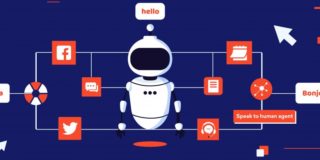What’s common between the customer service offered by a hotel, a retailer, and a bank these days? Chatbots! Ch...
Managing remotely: transitioning from a physical to virtual contact center | #customersupport #supporticket
As the COVID-19 pandemic swept the world, customer service contact centers reacted by sending agents to work f...
How Customer Support Drives and Grows Recurring Revenues | #customersupport #supporticket
“Customers buy products to enable and streamline their business operations. Services drive recurring revenue by helping customers to successfully adopt and apply products.”
5 key takeaways from COVID-19 about remote work | #customersupport #supporticket
Highlights 41% of people working remotely report higher productivity than when they worked in the office Vide...
10 quick tips to work better in the RingCentral app | #customersupport #supporticket
At RingCentral, we’re always looking for ways to improve how your teams communicate and collaborate. That’s wh...
4 old practices that won’t work after COVID | #customersupport #supporticket
It’s not news that COVID-19 suddenly, unexpectedly, and dramatically turned the business world on its head. Bu...
3 questions organizations should ask themselves about long-term remote work | #customersupport #supporticket
Highlights Businesses are considering long-term remote work plans Switching from temporary to long-term remot...
Virtual assistants vs Chatbots: What’s the Difference? | #customersupport #supporticket
In the world of AI – chatbots, and virtual assistants are two popular words that are used interchangeably too ...
Total experience: why TX is the new tech buzzword you need to know | #customersupport #supporticket
‘Tis the season. While there’s much about 2020 that doesn’t look anything like a normal year, some things are ...
A Tale of Two B2B Customer Support Departments, Chapter 2 | #customersupport #supporticket
 “It was the best of times, it was the worst of times, it was the age of wisdom, it was the age of foolishness…” So begins the classic novel, A Tale of Two Cities, by Charles Dickens. It refers to the premise of the story: A time of despair and suffering on one hand, and joy and hope on the other. And it’s how we began our story of two B2B customer support departments.
“It was the best of times, it was the worst of times, it was the age of wisdom, it was the age of foolishness…” So begins the classic novel, A Tale of Two Cities, by Charles Dickens. It refers to the premise of the story: A time of despair and suffering on one hand, and joy and hope on the other. And it’s how we began our story of two B2B customer support departments.
In Chapter 1 we meet Jack who is suffering with a customer support department that still struggles with silos between support, sales, and product teams, using e-mail to manage support tickets, and no visibility into the history of the customer issues; and Emily, whose customer support department works collaboratively with sales and product teams to resolve issues, provides tools and resources that help educate users making the most of the solution, and focuses on building relationships rather than closing tickets.
We continue the story in Chapter 2.
Jack is hearing word that the company just lost another big account. His customer support team is starting to doubt their ability to support those that need it. “Should we have seen it coming?” “We’re trying to provide good service, what can we do better?” “I know it’s not our fault, but we just don’t have the tools we need to solve complex issues when we’re so bogged down with a high volume of basic tickets.” “I wish we could get more help from the product team.” Sales is blaming customer support for losing the customers they worked so hard to bring in.
Emily and her B2B customer support team use a B2B customer support software










